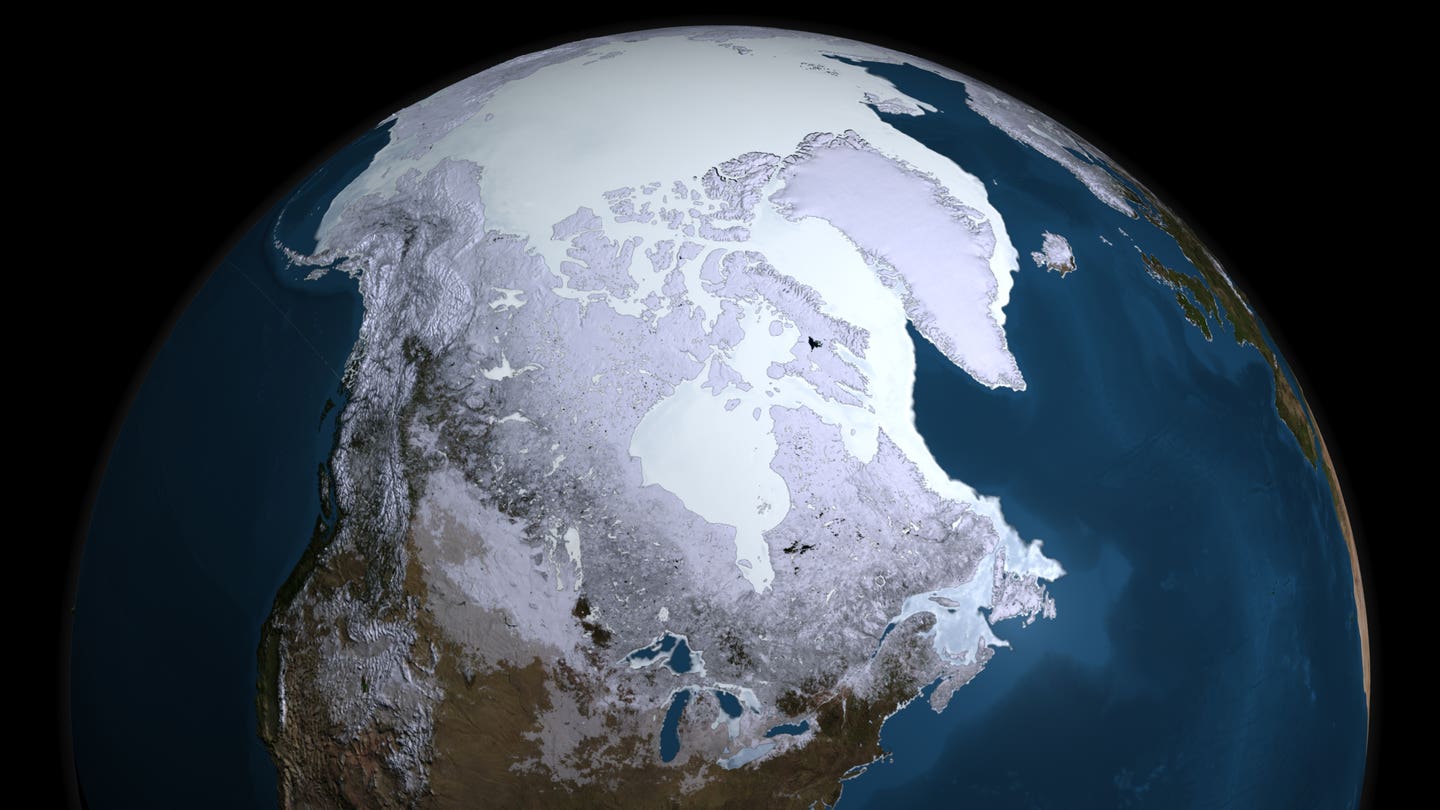Geoscientists finally found the cause of Earth’s last ice age
Fresh research conducted by the University of Arizona’s experts suggests a plausible explanation for the swift expansion of the ice sheets

Where did the ice sheets that rang in the last ice age more than 100,000 years ago come from? (CREDIT: CC BY-SA 4.0)
For years, scientists have struggled to understand two major mysteries about the Earth’s climate: what triggered the formation of the vast ice sheets during the last ice age, and how did they spread so quickly?
Recent research from the University of Arizona sheds new light on these questions, proposing an explanation that may apply not only to the most recent ice age but also to other glacial periods in Earth’s history.
Published in Nature Geoscience, the study offers insights into the mechanisms behind Earth’s recurring cycles of glaciation and warming, particularly the rapid expansion of ice sheets across the Northern Hemisphere. These massive sheets of ice covered large portions of the northern landmasses, including Canada, Siberia, and parts of Europe.
About 100,000 years ago, Earth underwent a significant cooling period. This was a time when mammoths roamed the frozen landscape and the climate of the Northern Hemisphere became much colder. Over roughly 10,000 years, small mountain glaciers gradually grew, eventually merging into enormous ice sheets.
These glaciers expanded to cover much of what is now Canada, Siberia, and northern Europe. However, while scientists have long understood that shifts in Earth’s orbit caused cooler summers in the Northern Hemisphere, making widespread glaciation possible, one question has remained: how did ice sheets form in relatively mild areas like Scandinavia?
Typically, Scandinavia’s warmer summer climate, influenced by the North Atlantic Current, should have prevented large-scale ice formation, especially compared to the much colder Canadian Arctic.
“While the Canadian Arctic is expected to regularly form ice due to its colder climate, Scandinavia should be largely ice-free,” explained Marcus Lofverstrom, lead author of the study and assistant professor of geosciences at the University of Arizona.
Both regions share similar latitudes, but summer temperatures in Scandinavia are typically above freezing, thanks to the warm waters carried by ocean currents, while the Canadian Arctic stays frozen.
Related Stories
The key, Lofverstrom believes, lies in an intricate system of oceanic and atmospheric interactions. His team used the Community Earth System Model, an advanced climate model, to replicate conditions from the last glacial period. By expanding the ice-sheet model to cover a larger area of the Northern Hemisphere, they gained new insights into what might have caused such a rapid spread of ice.
Their simulations revealed a critical factor: ocean gateways in the Canadian Arctic Archipelago. These narrow passages between the islands of northern Canada played a decisive role in the climate of the North Atlantic and the spread of ice sheets in Scandinavia.
The model’s results suggested that as long as these ocean gateways remained open, ice sheets could only grow in the coldest areas, like northern Canada and Siberia. However, when these gateways became blocked—perhaps by marine ice—the North Atlantic circulation weakened.
This weakening caused colder conditions to spread to Scandinavia, allowing glaciers to form there as well. “The blocking of these ocean pathways altered the North Atlantic climate enough to trigger ice growth in Scandinavia,” said Lofverstrom.
To further support their findings, the researchers examined marine sediment records from the North Atlantic. These records provided clear evidence that glaciers in northern Canada formed several thousand years before those in Europe.
Moreover, the sediments pointed to a weakened ocean circulation system around the same time, consistent with the model's predictions. This alignment between the simulation and real-world data offers compelling evidence for the team’s theory.
Understanding the factors that drive glaciation is crucial not just for studying Earth’s past but also for predicting future climate changes. Even small shifts in the climate system can lead to dramatic effects, as seen in the past.
Lofverstrom emphasized this point, suggesting that the findings could help explain not only the major ice ages but also shorter, intense cold periods, like the Younger Dryas. This brief cold snap interrupted the warming trend at the end of the last ice age and remains a topic of great interest to climate scientists.
This research could have broader implications for how we think about climate change today. The study shows that relatively minor changes in the Earth’s system—such as shifts in ocean currents or ice formation—can lead to significant consequences.
Lofverstrom suggested that this principle may also apply to modern-day climate systems. “Small disturbances could result in substantial and abrupt changes in ice sheet size, with far-reaching effects on sea levels, ocean currents, and global climate patterns,” he noted.
Other scientists in the field have praised the study for its groundbreaking insights. Professor Anders Levermann, a climate expert at the Potsdam Institute for Climate Impact Research, called it “a significant piece of research that sheds new light on one of the major mysteries of Earth’s climate history.”
The study provides strong evidence that marine ice may have been a crucial trigger for glaciation in Scandinavia, which could lead to a better understanding of past and future climate changes.
The success of the study highlights the value of interdisciplinary collaboration. Lofverstrom and his team included experts in geosciences, oceanography, and climate modeling, working together to tackle one of Earth’s great climate puzzles.
Their efforts were made possible by the use of advanced computational models that allowed them to simulate the complex interactions between the atmosphere, oceans, and ice sheets. These models are essential tools for modern climate science, helping researchers explore scenarios that would be impossible to test in the real world.
Lofverstrom plans to continue investigating the complex dynamics of Earth’s climate and ice sheets. “There is still so much to learn about the processes driving glacial-interglacial cycles,” he said. His team’s work marks a major step forward, but he hopes it will inspire further research into these crucial topics.
As the world faces the growing challenge of climate change, understanding the complex interactions between ice sheets, ocean currents, and the atmosphere is more important than ever. The findings from this study serve as a reminder that even minor changes in Earth’s climate system can have profound impacts, both in the past and the present.
Note: Materials provided above by The Brighter Side of News. Content may be edited for style and length.
Like these kind of feel good stories? Get The Brighter Side of News' newsletter.
Joseph Shavit
Head Science News Writer | Communicating Innovation & Discovery
Based in Los Angeles, Joseph Shavit is an accomplished science journalist, head science news writer and co-founder at The Brighter Side of News, where he translates cutting-edge discoveries into compelling stories for a broad audience. With a strong background spanning science, business, product management, media leadership, and entrepreneurship, Joseph brings a unique perspective to science communication. His expertise allows him to uncover the intersection of technological advancements and market potential, shedding light on how groundbreaking research evolves into transformative products and industries.



